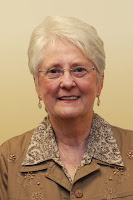At Muskoka Algonquin
Healthcare, we know the importance of a hospital experience that brings a bit
of the outside world to your bedside when you are feeling detached or maybe a
little isolated. It’s comforting to know there is an opportunity to rent
entertainment services that keep you connected, informed, and entertained.
With the generous
support of our two Foundations, MAHC has installed new, state-of-the-art entertainment
systems at the patient’s bedside. We are excited to replace old-fashioned
TV boxes that were basic and quite antiquated with new flat-screen touch-screen
terminals, equipped to provide cable television and movies, Internet service,
radio, games and audio books all in one modern unit on an easily mobile swing
arm for a rental rate of $10 per day.
 |
| New, state-of-the-art entertainment systems have been installed at the patient’s bedside. |
Getting to this point of bringing better technology to the bedside has been a collaborative process involving feedback from patients and the greater community. In the summer of 2016 we had more than 200 responses to a survey seeking input on the services that are most important to patients and families. This was helpful to inform what the new system should look like and was key to moving plans forward with our third-party partner, Hospitality Network.
I’m really proud to
share we have reduced the daily rental rate by more than $2 per day for a better quality screen and service than what
we had at our MAHC sites previously.
What is even more
amazing is the new system provides future capability to deliver additional
content and functionality to the bedside to contribute to an even better
patient experience.
The installation of
these integrated units was completed just before Christmas and we were pleased
to provide all patients with complimentary service during the 10-day install
period – just a little gift from us to you!
Telephone service remains
separate and complimentary from the new patient entertainment systems and existing
free WiFi Internet continues to be available throughout our buildings for
personal devices.
But, if you need a
little distraction to help you heal while you’re with us, you can easily rent
these services. Speak to a member of your care team, dial 3767 from a hospital
phone at SMMH, or 2767 from a hospital phone at HDMH, or follow the on-screen instructions
on how to rent the service. Information cards are also available on the
inpatient units and include the cable television channel line-up on the reverse.
Happy viewing!







